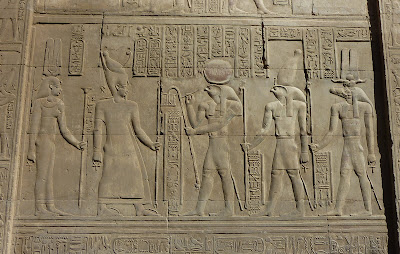Karak and Luxor temples were our destinations today.
Karnak, situated on 257 acres, is the largest religious building ever built. The ram headed sphinxes flank the entrance Amun-Ra temple, the most important place of worship during the New Kingdom. The immense size and variety of structures defy description. Karnak was added to, dismantled, restored, enlarged, and decorated for over nearly 1500 years.
The Giant Scarab is adjacent to the Sacred Lake at Karnak. It is said that if you walk around the scarab seven times your wish will be granted. Notice the obelisk in the background.
We returned to Karnak in the evening for the Light and Sound Show. The lighted buildings are reflected in the Sacred Lake. The misty lights in a distance illuminate the mountain of the Valley of the Kings and Queens.
We also visited the Luxor Temple also built during the New Kingdom. As with many temples, things were added during Greco-Roman times including this fresco.
In front of this temple is the Avenue of Sphinxes which runs all the way to Karnak about two miles away. Some of these sphinxes are still being excavated. We also fit in a quick visit to the Luxor museum.



















































